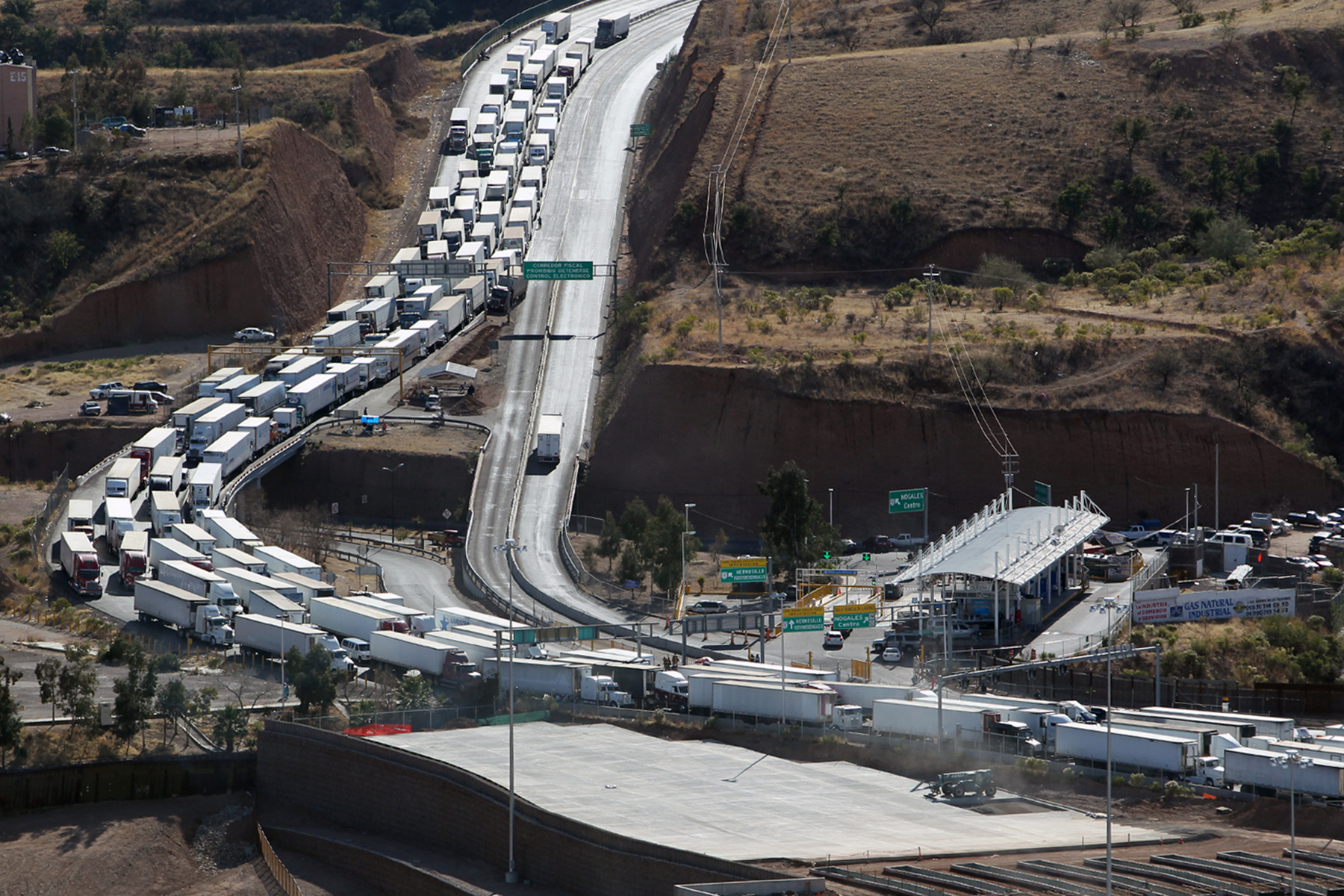The pandemic’s effects on global supply chains exposed vulnerabilities that have caused a reconsideration of the United States’ reliance on overseas goods. This shifting of tectonic plates, as Chris Camacho, president and CEO of GPEC, describes it, marks the start of a new era — one where Arizona stands to benefit, so long as the state continues to make investments in infrastructure, such as extending Proposition 400.
“I believe North America is going to compete as one, where Mexico’s manufacturing and supply chain is going to augment the U.S. [research and development] and manufacturing base to compete with many Asian markets,” he says.
Global companies, Camacho continues, want to be closer to their customers and develop redundant supply chains so they’re no longer reliant on a single market — China, for example — if another pandemic or geopolitical conflict disrupts the movement of goods.
“Labor costs in Asia continue to rise, so there’s no longer the extreme cost advantage there once was in producing goods in Asia and shipping those goods to the U.S.,” Camacho says. “That change has induced an opportunity for Mexico and the U.S. to become even closer partners.”
To compete on cost and proximity to customers relative to Asian markets, a balance between U.S. and Mexican operations must be struck, along with the ability to move products across the border. The United States–Mexico–Canada Agreement (USMCA), a free trade agreement in effect since July 2020, creates a clear pathway for this cooperation.
Building the base
“If we support the strengthening of that manufacturing base in Mexico, the more competitive we’re going to be. It will mean more distribution, warehousing and higher value-added manufacturing in the U.S.,” Camacho says. “The USMCA lays the foundation for that, but my hope over the next 20 years is that the border becomes a true commerce corridor.”
READ ALSO: Here’s why Metro Phoenix is on the way to becoming a Tier 1 market
One of the ways this partnership is being developed is with the Arizona-Mexico Commission. Camacho says that the policy and infrastructure frameworks are moving in the right direction, along with the will required for this cooperation to work.
“What GPEC brings is a public-private model of taking politics out and looking at the business opportunity, which is build more commerce capacity,” he continues. “That’s what we’re focused on.”
Eric Anderson, executive director of the Maricopa Association of Governments (MAG), says that a binational council of local elected officials from Arizona and Sonora, called the Ari-Son Council, is another organization working to strengthen the relationships between the two locales.
“If you look at the emerging technology sector here — [Taiwan Semiconductor Manufacturing Company (TSMC)], Lucid Motors, Nikola — a lot of those companies have or will have supplier relationships with businesses in Mexico, so we’re going to see the economic relationship between Arizona and Sonora continue to strengthen,” he continues.
Proposition 400
Part of becoming a “continental gateway” — what Camacho calls this industrial ecosystem between Arizona and Mexico — requires robust infrastructure to facilitate the transfer of products and materials.
“We need the Mexican ports up and down the coast to continue to be invested in,” Camacho says. “But once you get those ports improved, we have to find the gateways to physically get the goods into the U.S., whether that’s rail or road infrastructure. We need to be doing the same on the U.S. side. How are we ensuring that our ports of entry are constantly modernized? We also need the road infrastructure in Arizona to connect with major population centers.”
Not only are roads important to businesses already operating in Arizona, but also for ones that are looking to locate in the Grand Canyon State.
“If you look at the site selection criteria used by companies across the country, it’s about access to labor and markets,” Anderson says. “Access just means transportation, so the more efficient your transportation system is, the more competitive you are from an economic development perspective, because time is money.”
TSMC, Anderson continues, wouldn’t have chosen North Phoenix to spend $40 billion if Greater Phoenix hadn’t created and maintained a well-designed freeway network. Having such a system did not happen by accident.
In 1985, voters approved Proposition 300, a half-cent sales tax that was limited to new freeway construction. Twenty years later, voters approved Proposition 400, which extended the tax for another 20 years and allowed for the funds to be spent on improvements to existing highway infrastructure.
These investments led to hundreds of miles of new or improved roadways, including SR 51 and the Loops 101, 202 and 303. Today, 80% of jobs in Maricopa County are two miles or less from a freeway or light rail corridor.
With Proposition 400 set to lapse in 2025, leaders have been at work to give residents an opportunity to extend the sales tax yet again. In July, however, then-Governor Doug Ducey vetoed the ballot measure that would’ve let voters weigh in on the matter, citing inflation, the costs of administering a special election and a lack of transparency in the bill as reasons.
“At this point in time,” Anderson says, “we don’t have a path to the ballot to extend Proposition 400, nor do we have money to do the necessary improvements to support the TSMC development now, such as the connection of I-17 and Loop 303. There’s an interim connection today, but that’s a $200-million-plus project to build a freeway interchange like the others you see around the Valley. Without the extension, there’s no money to build SR 30 in the Southwest Valley either.”
There is time to extend the proposition before it sunsets with Governor Katie Hobbs and the new 2023 legislature.
“Proposition 400’s extension is paramount to our long-term success,” Camacho concludes. “I don’t think there’s anything more dangerous than not doing it.”




